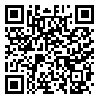BibTeX | RIS | EndNote | Medlars | ProCite | Reference Manager | RefWorks
Send citation to:
URL: http://journal.zums.ac.ir/article-1-3475-en.html
2- Dept.of Basic Scienses, Faculty of Rehabilitation, Shahid Beheshti University of Medical Sciences. Tehran, Iran.
3- Dept. of Physical Medicine and Rehabilitation, Faculty of Medicine, Shahid Beheshti University of Medical Sciences, Tehran, Iran.
4- Military Health Research Centre, Baqiyatallah University of Medical Sciences, Tehran, Iran.
Background and Objective: Stroke results in increased sensory disorder, motor impairment and functional deficit. Sensory stimulation is the basis for beginning of the process of brain plasticity and recovery of sensory motor function in the affected limbs. The objective of this study was to investigate the effect of sensory retraining on functional recovery of upper limbs in patients with ischemic stroke.
Materials and Methods: This pre-post intervention experimental study was undertaken with 30 patients (both male and female) aged 40-65 years old suffering from ischemic stroke who were assigned to the experimental and control groups (n =15). A number of instruments were used to collect the necessary data: questionnaires for background information, Fugl-Meyer for clinical tests (limb function), Box and Block to assess manual skills of the patients, and Motoricity index for assessment of the motor impairment. The experimental group received defined treatments for 24 sessions (every other day).The collected data prior to and following the treatment were analyzed.
Results: The main pre-treatment baseline values were similar and there was no significant difference between the groups. Pre and post treatment values were statistically significant for all tests in the experimental and control groups (with a clear superiority of the experimental group) which denoted an improving trend. The variations in test percentages was statistically significant in the experimental group compared to the control group.
Conclusion: Sensory retraining accompanied by routine physiotherapy lead to significant improvement in functional tests, manual skills, and upper limb motor deficits. Therefore, sensory retraing is recommended due to its positive effect on patients’ rehabilitation.
Keywords: Ischemic Stroke, Sensory retraining, Upper limb, Functional activity
Received: 2016/01/10 | Accepted: 2016/01/10 | Published: 2016/01/10
| Rights and permissions | |
 |
This work is licensed under a Creative Commons Attribution-NonCommercial 4.0 International License. |




